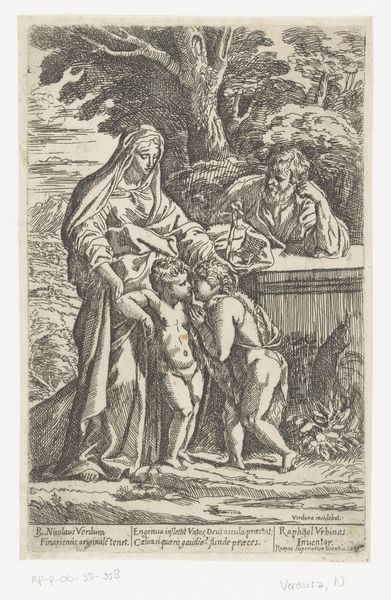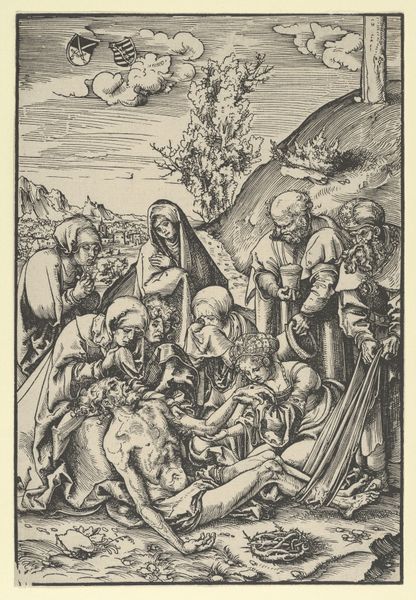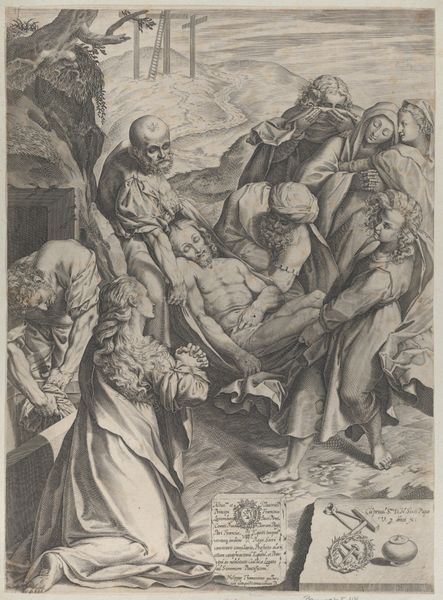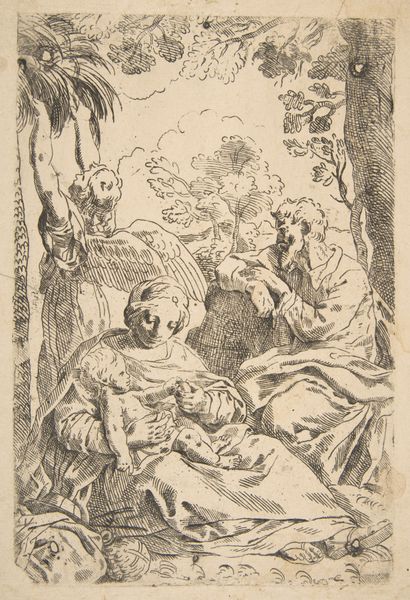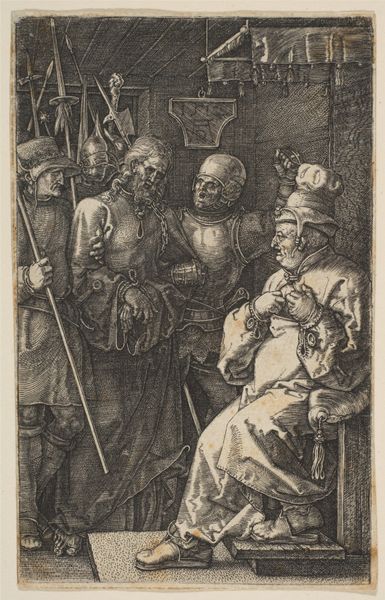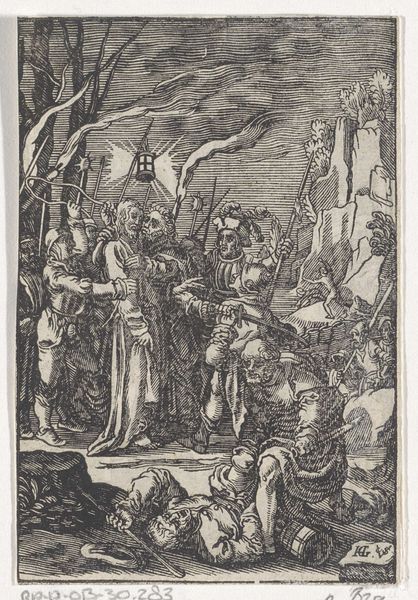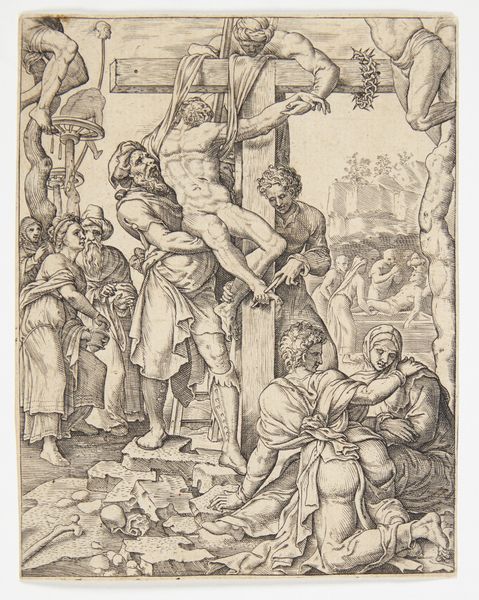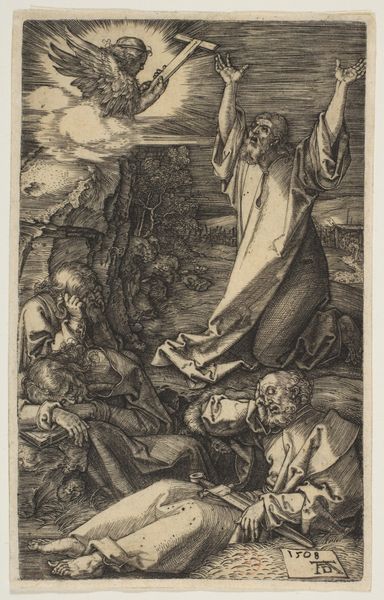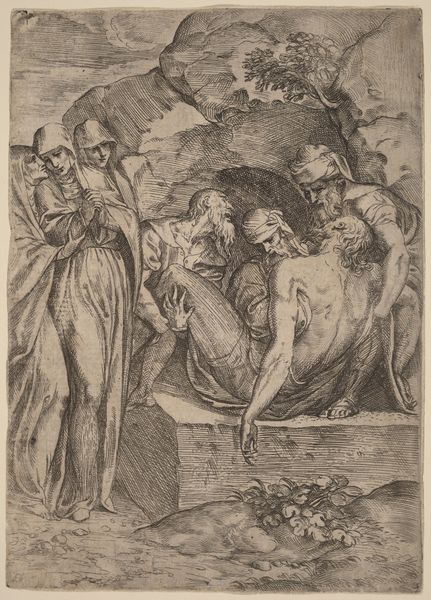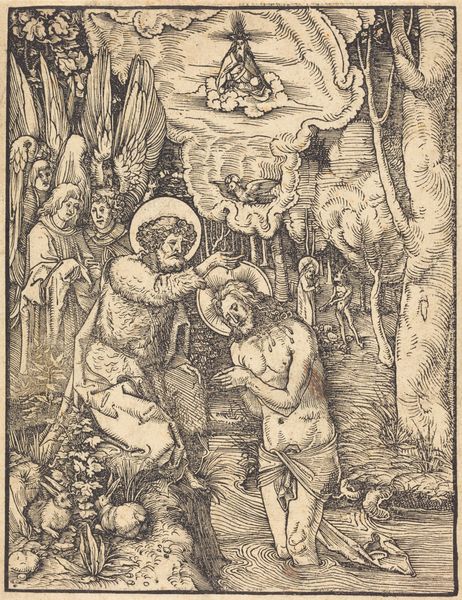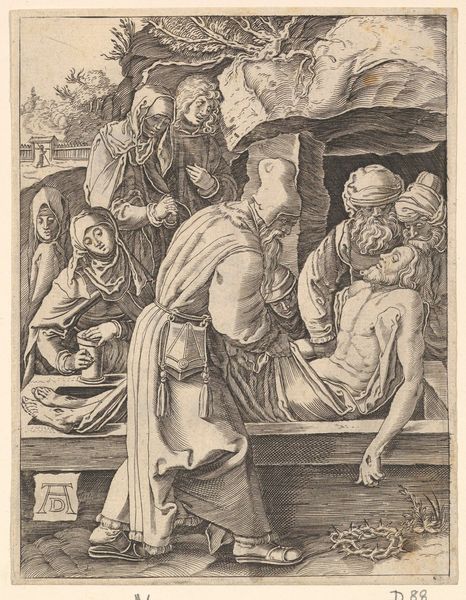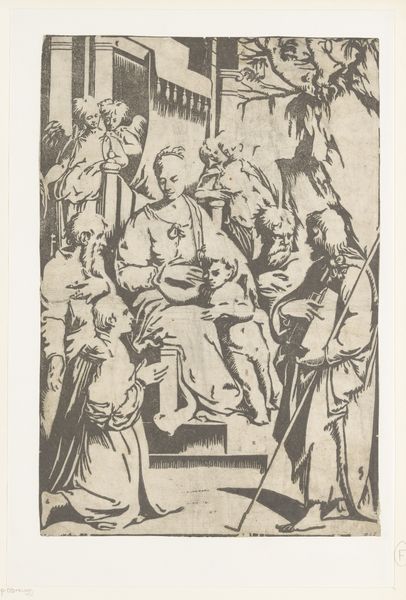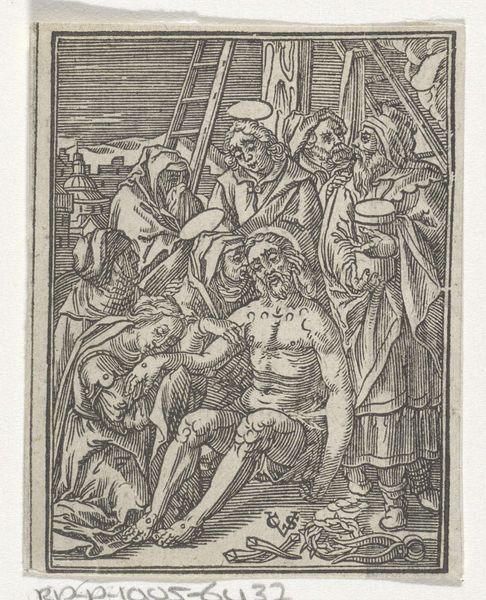
drawing, print, engraving
#
drawing
#
narrative-art
# print
#
figuration
#
history-painting
#
northern-renaissance
#
engraving
Dimensions: Sheet: 4 11/16 × 2 15/16 in. (11.9 × 7.4 cm)
Copyright: Public Domain
Curator: This engraving, dating to 1507, is entitled "The Lamentation, from The Passion" and was created by Albrecht Dürer. It's currently housed here at the Metropolitan Museum of Art. Editor: The first thing that strikes me is its incredible intensity for such a small, monochromatic piece. It really pulls you into this intimate moment of grief. Curator: Indeed, Dürer's masterful handling of the engraving technique creates a depth and texture that is truly remarkable. Think about the process: the physical labor, the specialized tools and training required to incise these fine lines into a metal plate, then the press to transfer the image. Each print represents a stage in a complex production. Editor: And considering the period, its historical context adds layers of understanding. We must consider Dürer’s own socio-political circumstances as well as the societal expectations on religion. Images like these functioned within networks of exchange, contributing to a wider understanding of suffering and Christian values, while reflecting a complex cultural hierarchy. Curator: Precisely. Consider the varying expressions. There's such incredible control here of conveying human emotion. Editor: Looking closely, I can’t help but notice that Dürer signs his work so visibly in the foreground on what appears to be a tombstone. It does bring a sense of artistic pride to a painful scene, complicating how one understands the message of devotion versus recognition of labor. Curator: But does that pride in artistry somehow diminish the message of suffering or humanizes it? To produce prints en masse was a business of faith—literally for religious dissemination, as well as commercial sustenance. It's that complex interplay between commerce, the social messaging of faith, and craft that makes this a compelling work. Editor: It speaks to how artworks navigate complex roles – as objects of veneration and reflections on historical contexts. Dürer’s masterful technique and symbolic representation invite reflection. Curator: I agree, and recognizing all those complexities and interplays deepens our understanding. Editor: It certainly changes how we view something as ostensibly simple as a black-and-white engraving.
Comments
No comments
Be the first to comment and join the conversation on the ultimate creative platform.
